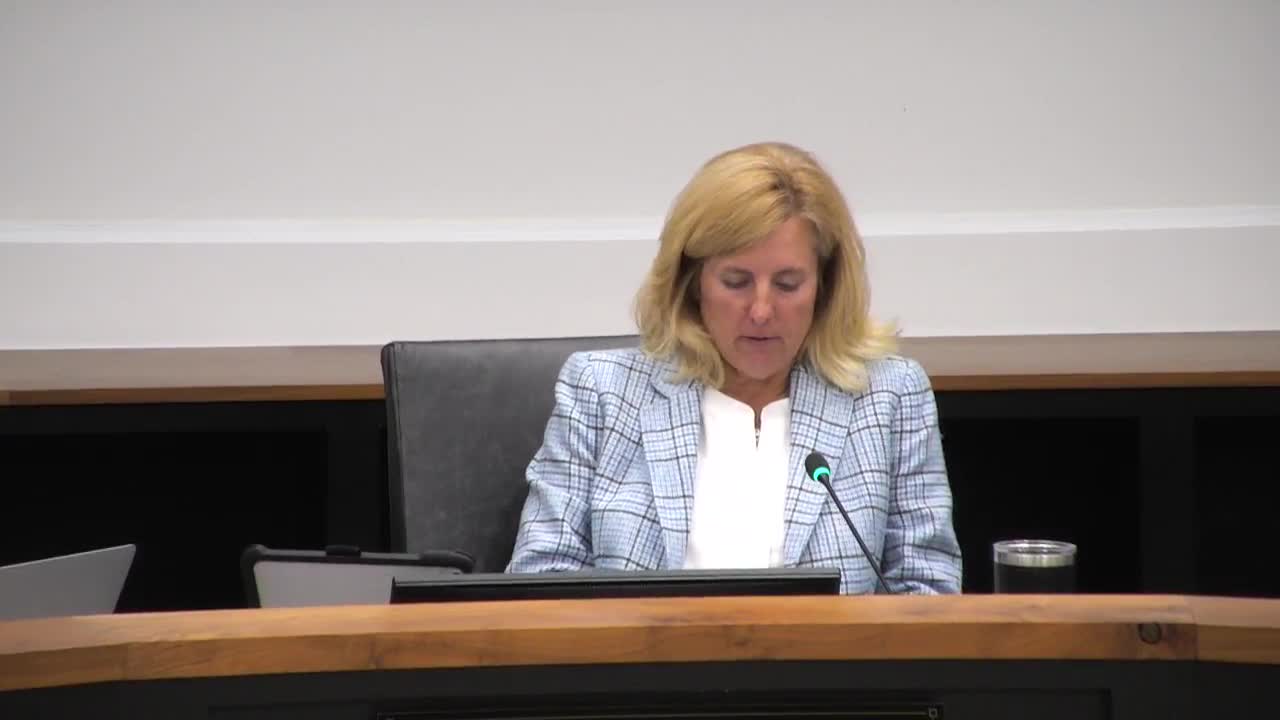Council hears first reading of TIF for Bridge Park J Block; staff estimates $74.9 million in service payments over 30 years
October 20, 2025 | Dublin City Council, Dublin, Franklin County, Ohio
This article was created by AI summarizing key points discussed. AI makes mistakes, so for full details and context, please refer to the video of the full meeting. Please report any errors so we can fix them. Report an error »

City staff presented ordinance 46‑25 on Oct. 20, which would authorize two tax increment financing (TIF) incentive districts and related provisions for the Bridge Park J Block development.
Finance staff described the project as a multi‑building development that includes 109,000 square feet of office space, two condominium residential buildings constructed in different phases, and a 508‑space parking garage. The developer has a separate economic development agreement that includes performance incentives related to anticipated office tenant withholding. Staff estimated the TIF could generate about $74,900,000 in annual service payment revenue over 30 years, with a potential $21,000,000 in excess revenue that could flow back to the city during the TIF term.
Staff said the TIF districts will be created consistent with the Bridge Street District cooperative agreement between Dublin City Schools and the City of Dublin; the ordinance establishes a municipal public improvement tax increment equivalent fund to receive service payments and specifies garage infrastructure that benefits the incentive districts. Staff recommended returning for final action at second reading on Dec. 8; there is a required 30‑day period between first and second hearing and approval.
Councilmembers asked staff about financing risks if the second phase residential building were delayed or not built. Staff said the financing plan includes developer guarantees and interim financing that depends on phased construction; the development authority (finance authority) would issue the bonds, and the city would not be on the hook for developer debt. Staff said the developer will likely need to provide guarantees until the later phase is complete to remove the interim financial risk to bondholders.
Ending: Staff scheduled a second reading/public hearing for Dec. 8 and noted this ordinance is one of several steps in a multi‑step development approval and financing sequence.
Finance staff described the project as a multi‑building development that includes 109,000 square feet of office space, two condominium residential buildings constructed in different phases, and a 508‑space parking garage. The developer has a separate economic development agreement that includes performance incentives related to anticipated office tenant withholding. Staff estimated the TIF could generate about $74,900,000 in annual service payment revenue over 30 years, with a potential $21,000,000 in excess revenue that could flow back to the city during the TIF term.
Staff said the TIF districts will be created consistent with the Bridge Street District cooperative agreement between Dublin City Schools and the City of Dublin; the ordinance establishes a municipal public improvement tax increment equivalent fund to receive service payments and specifies garage infrastructure that benefits the incentive districts. Staff recommended returning for final action at second reading on Dec. 8; there is a required 30‑day period between first and second hearing and approval.
Councilmembers asked staff about financing risks if the second phase residential building were delayed or not built. Staff said the financing plan includes developer guarantees and interim financing that depends on phased construction; the development authority (finance authority) would issue the bonds, and the city would not be on the hook for developer debt. Staff said the developer will likely need to provide guarantees until the later phase is complete to remove the interim financial risk to bondholders.
Ending: Staff scheduled a second reading/public hearing for Dec. 8 and noted this ordinance is one of several steps in a multi‑step development approval and financing sequence.
View full meeting
This article is based on a recent meeting—watch the full video and explore the complete transcript for deeper insights into the discussion.
View full meeting
